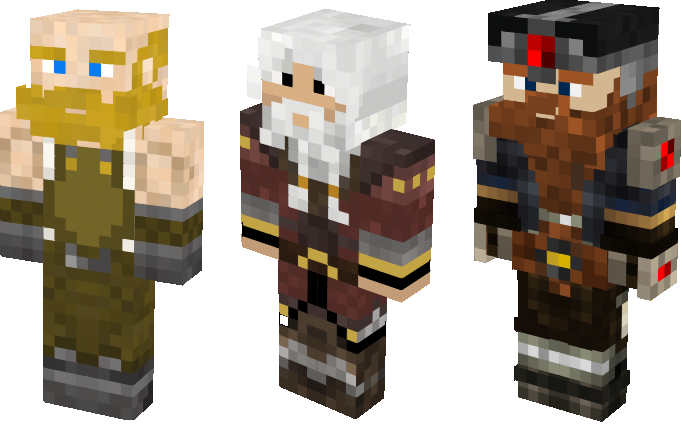Honourbound Dwarves, The Clans of Votha; wrapped up in complex kinships and traditions.
Lam. Konos. Arelbel. These are the three remaining Clans of Votha. The Dwarves of Votha are united in naught but the complex ties between these clans and the first grudge against their creator, Morkith. It was the Traditionalist Lams that helped forge the Entente, but it was the Konos who made it prosper, and the Innovative Arelbel who brought them to the cutting edge. But with two clans, Ral and Deler, lost and broken, the dwarves must find new ways to balance the old traditions while adapting to the new world of Nebelloren.

The oldest organizations in the Entente were the Five Clans of Votha: Lam, Deler, Ral, Konos, and Arelbel. While Deler and Ral were lost to Undead Hordes, Lam, Konos and Arelbel continue to uphold their ancient legacies. All Dwarves are born into a Clan and while some will shift allegiances for marriage or honour, for most their clan is their Kin. Clans can be further distinguished into families, each with its own name though usage of these names differs from dwarf to dwarf. Clans are led by Elders, respected leaders who represent their clans and their ideals.
Clan Lam: Lam is known for upholding the most well known of the dwarven arts turning to the ancient traditions of the dwarven people for guidance and wisdom.With some distaste, they may be willing to abide by well-tested, obviously superior changes.
Clan Konos: Konos is known for its deep reverence for the ideal of the Clan as family. While all clans are to respect their members, the Konos’ believe that you should always help a kinsman in need. This leads to deep connections between all branches and a strong emphasis on providing for your kin even at the expense of yourself.
Clan Arelbel: Arelbel is known for its belief in innovation and rapid adaptation in facing challenges. Arelbels will always attempt to find new ways to push their craft of choice to its limits. While this can often lead to setbacks and grumbling from the Lams, they are nonetheless undeterred. This driving pursuit of advancement means that many Arelbels will not shy away from strange subjects, research or potential discoveries.
The majority of Dwarves follow The Adamant Path, named for a mythological metal said to be the purest and strongest of all materials. Followers of the Adamant Path seek to refine and strengthen their spirit and the spirits of those around them so that in death their souls will be strong enough to join in the battle against their hated god, Morkith.
To the dwarves, Morkith is believed to be both their creator and creator of the world as a whole. Despite his status as a creator deity, the Dwarves believe Morkith cast them aside for petty reasons, and in the process became the root of each and every evil or trial in a dwarfs life. The Dwarves see Morkith as their ultimate foe and as such, they do not pray or worship him in any way, only mentioning his name to curse him and the disadvantages he sends them.
The view of The Adamant Path is that all things can be mastered. As building with stone was mastered by Lam so will all other things in time and one day the root of suffering itself.
To slight a dwarf is to risk a grudge that will wait until the day till vengeance can be reaped. If a slight isn’t forgiven or immediately settled, it is to be recorded in a Book of Grudges, with each keep or hillock maintaining their own book. The Elders of each hold would keep this Book, recordings the grievances dwarves have against other individuals. The grudges can be anything from a late payment on services to someone insulting the honor of a dwarf, their clan, or any other group important to them. Grudges can be resolved by just doing what the grudger asks but sometimes will resort to a brawl. Dwarves will hold their grudges for as many years as they have to to maintain their honor, with some being passed down generationally. To the Dwarves, honor is the measure of one's worth, and so to let go of a grudge unsettled is a highly alien concept.
Dwarves are short and stocky. They can range from pale-skinned to tanned, depending on the location of their homes, with eye and hair colors ranging as much as it does in Humans.
Dwarves live on average to around 250, with the more long lived reach about 275. Dwarves mature around the age of 30.
Dwarven first names have no set themes, but generally tend towards Nordic names. All dwarves possess a Clan which will always be mentioned, and some dwarves may have a Family name, indicating what branch of the clan they come from.